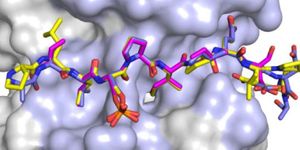Humans may not be able to regenerate limbs like zebrafish can regenerate fins, but improving the human ability to heal wounds with the same mechanisms that zebrafish incorporate could work. In fact, the newest study from the National Institutes of Health (NIH) found a gene that might be able to do just that.
A gene called heat shock protein 60 (Hsp60) has just been discovered to be critical for tissue regeneration and wound healing in humans, according to a study from the NIH’s National Human Genome Research Institute (NHGRI).
"This study proposes an unusual role for a well-known gene," said senior author Shawn Burgess, Ph.D. "This gene is found in every organism from bacteria to man. We have shown that in vertebrates, it has a surprising role in immunity that is essential for wound healing."
Before this study, published in the journal npj Regenerative Medicine, Hsp60 was known for producing proteins that patrolled other proteins, ensuring they were folded correctly. However, findings that showed Hsp60 doubled as a signaling molecule that triggered an inflammatory response to bacterial infection from a cut in the skin, NHGRI scientists thought the gene might be connected to wound healing as well.
They examined the role of Hsp60 with targeted mutagenesis: creating zebrafish mutants with Hsp60 deleted from their genome. The experimental zebrafish developed normally at first, but when they were wounded either by amputation of a caudal fin or damage done to hearing cells, they couldn’t regenerate the proper tissues. However, when they injected Hsp60 directly to the site of injury, Burgess explained, “the tissue surrounding the wound started to regenerate faster," said Dr. Burgess. "That's when we got really excited."
The applications of a potential wound healing acceleration gene could provide novel therapeutics for wound closure in diabetic patients, fifteen percent of which develop foot ulcers due to reduced sensation, poor circulation, and skin irritation, and they can lead to hospitalization and even amputation. According to the researchers, diabetes is the leading cause of non-traumatic lower limb amputation in the United States.
The gene could also lead to normal wound healing and scar reduction in non-diabetic individuals. “We also want to know if it will help any wound heal, not just wounds encountered by people with diabetes,” Burgess said. “Will it reduce scarring and increase the speed of healing? When we understand the biology better, we can more easily apply it to human treatments.”
Source:
NIH/National Human Genome Research Institute









